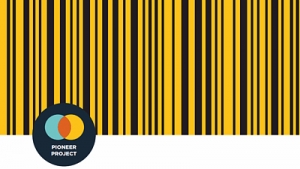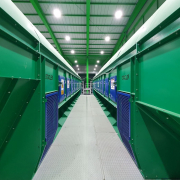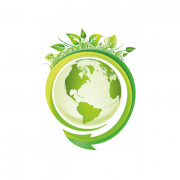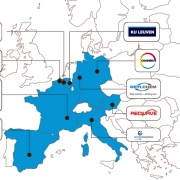Sorting: Looking for the “Holy Grail”
The “HolyGrail” project was nominated for the Packaging Europe Sustainability Awards 2019 in the “Driving the circular economy” category.
In the European project, nearly 30 partners investigated how tagging of plastic packaging could have a drastic impact on more accurate sorting and high-quality recycling. This cross-industry project ran for three years and was driven by the efforts of different partners. “HolyGrail” officially closed in May this year and was led by Procter & Gamble and facilitated by the Ellen MacArthur Foundation. The participant group consisted of representatives from the full packaging value chain, covering brand owners, waste manufacturers, resin producers and converters, retailers, technology providers/consultants and investors.
The project’s aim was to develop better preconditions for a circular economy in the packaging sector. “Europe’s low recycling rates are mainly related to low collection rates and poor sorting efficiency,” Gian De Belder, packaging developer of P&G and project manager of the “HolyGrail”, was cited. Consequently, the project’s partners explored various technologies. According to the information, digital watermarks for packaging have prevailed. “Scanners read these watermarks which are invisible to the human eye. Then they can assign respective packaging, considering the packaging’s material and whether the material is used for packaging food, cosmetics or detergents and cleaners.”
The “HolyGrail”-Project helped 69 participants to forge ahead in the area of digital watermark-technology. The invisible codes were printed on various materials, for example on tags, foils and sachets. Furthermore, the partners have successfully experimented with various forms of PET- and HDPE-bottles, trays and boxes. “For the technology to be successful, as many forms of packaging as possible must bear a digital watermark,” the project’s partners are convinced. Due to digital watermarks, packaging becomes intelligent. Along the entire value chain, the stored information can be used, for example for the production, the quality assurance at the supermarket checkout, and right up to the disposal.
As reported by Borealis Group, one of the project partners, the technology of digital watermarks also has potential to bring disruption into other fields, such as consumer engagement and retail, through the creation of “smart/intelligent” packaging. Major retailers in the US (Wegmans, Walmart) and in Europe were already adopting the technology into their packaging. The concept would open up new possibilities currently “not feasible with existing sorting technologies”, including:
■ making a distinction between food and non-food packaging
■ proper identification of full-body shrink sleeve bottles
■ ODR packaging (opaque and difficult to recycle, including black packaging)
■ distinct mono and multilayer flexible packaging
■ proper identification of rigid multi-layer packaging materials (e.g. thermoforms or bottles)
■ safe introduction of new materials not hindering established recycling streams and proper identification of recyclable vs. compostable packaging
■ ability for closed-loop recycling.
As stated, the consumer engagement aspects are particularly interesting, “as the invisible codes can be easily read by mobile phones, bringing new features – ingredient transparency, coupons/loyalty, information on product use/dosage and how to deal with the packaging at the end of life – directly to the consumer’s fingertips.”
The next step
 As reported in the executive summary, despite having made a lot of progress in the years since Pioneer Project “HolyGrail” was initiated (Pioneer Projects are pre-competitive collaborations of participants of the New Plastics Economy Initiative, which is led by Ellen MacArthur Foundation), much work remains to be done to understand how resin-independent codes could be used at scale. Aside from proving the technologies’ robustness and actual value-adding potential, stakeholders need to agree on a common identification scheme in order to make it possible to implement codes as a basis for sorting at scale, the information says. “Another open question is data ownership, how to finance the still significant investments required to retrofit machinery in recycling facilities.” The project “HolyGrail” would demonstrate that the science and invention aspects necessary for improved sorting were already in place; the engineering and development aspects now needed to be addressed.
As reported in the executive summary, despite having made a lot of progress in the years since Pioneer Project “HolyGrail” was initiated (Pioneer Projects are pre-competitive collaborations of participants of the New Plastics Economy Initiative, which is led by Ellen MacArthur Foundation), much work remains to be done to understand how resin-independent codes could be used at scale. Aside from proving the technologies’ robustness and actual value-adding potential, stakeholders need to agree on a common identification scheme in order to make it possible to implement codes as a basis for sorting at scale, the information says. “Another open question is data ownership, how to finance the still significant investments required to retrofit machinery in recycling facilities.” The project “HolyGrail” would demonstrate that the science and invention aspects necessary for improved sorting were already in place; the engineering and development aspects now needed to be addressed.
“For these reasons, a key remaining activity is to disseminate the findings of the project in the full value chain and engage more stakeholders in order to enable a potential roll-out of digital watermark/chemical tracer technology for plastic packaging. To take the technology further, a good next step would be a cross value chain pilot on a selected sorting technology in an industrial Material Recovery Facility. This could be conducted as a private partnership or partially EU- or regionally funded initiative.”
www.newplasticseconomy.org/assets/doc/Holy-Grail.pdf
Video:
(GR 32019, Page 8, Photo: Willfried Wende / Pixabay)









